When we think of snakes, we often picture them slithering across land or coiled around tree branches. However, many snake species are remarkably adept at swimming, having evolved specialized adaptations that make them efficient aquatic hunters. These serpentine swimmers can move through water with grace and precision, using their muscular bodies to propel themselves forward with undulating, S-shaped movements. From the notorious sea snakes that spend their entire lives in marine environments to freshwater specialists that hunt in rivers and swamps, aquatic snakes demonstrate fascinating adaptations to life in water. This article explores seven remarkable snake species known for their exceptional swimming abilities, highlighting their unique characteristics and behaviors that make them masters of aquatic environments.
Water Moccasin (Agkistrodon piscivorus): The Infamous Cottonmouth
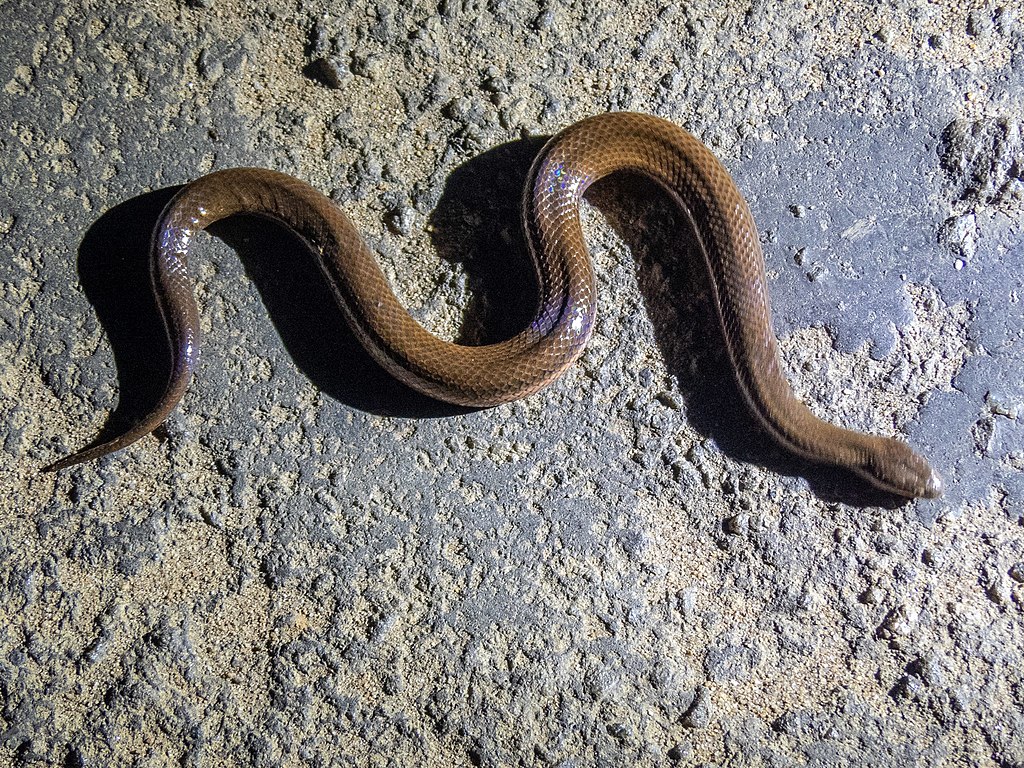
The water moccasin, commonly known as the cottonmouth, is among North America’s most feared aquatic serpents, recognized for its defensive display of opening its mouth to reveal the white lining that gives it its nickname. These venomous pit vipers are excellent swimmers that frequent slow-moving waters, swamps, and marshes throughout the southeastern United States. With their heavy bodies and broad, flat heads, water moccasins can swim with their entire body floating on the water’s surface, unlike many other snakes that only keep their head above water. They primarily hunt fish, frogs, and other small aquatic animals, striking with potent hemotoxic venom that subdues prey quickly. Water moccasins are also known for their territorial behavior and may stand their ground rather than flee when threatened, making encounters with these expert swimmers particularly dangerous for unwary humans.
Yellow-Bellied Sea Snake (Hydrophis platurus): The Ocean Wanderer
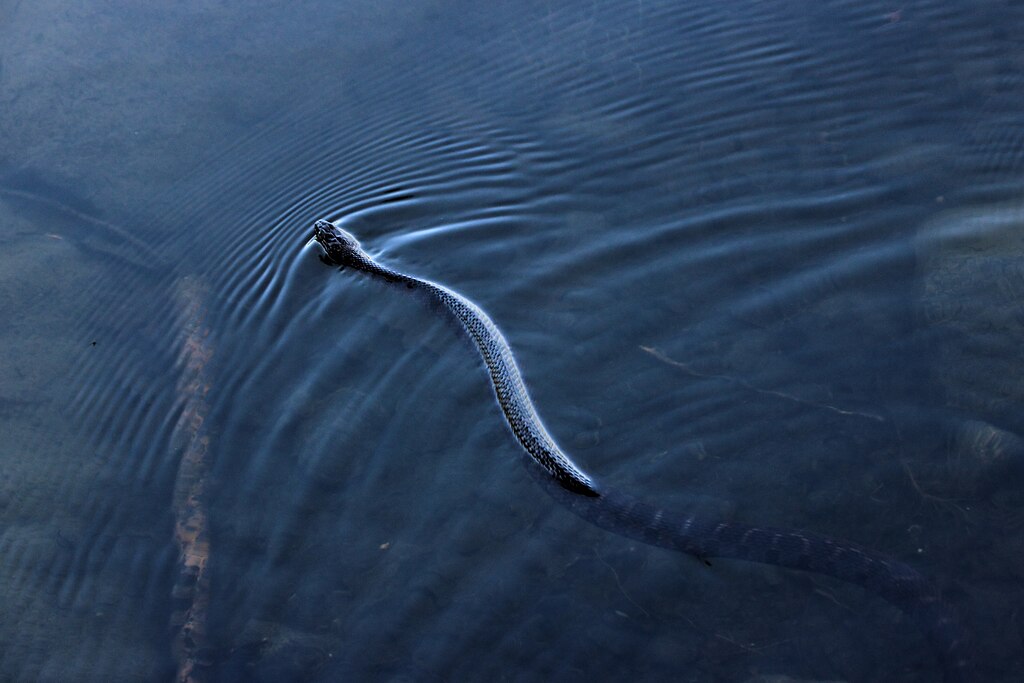
The yellow-bellied sea snake stands out as one of the most widely distributed reptiles on Earth, inhabiting tropical and subtropical waters across the Pacific and Indian Oceans. Unlike many aquatic snakes that divide their time between land and water, these true sea snakes spend their entire lives in the ocean, even giving birth to live young at sea. Their distinctive coloration—typically black or dark brown on top with bright yellow undersides—serves as warning coloration to potential predators about their highly potent venom. Anatomically specialized for marine life, yellow-bellied sea snakes have a flattened, paddle-like tail that propels them efficiently through water, while their lungs extend almost the entire length of their body to facilitate extended diving periods. These remarkable adaptations allow them to remain submerged for up to three hours while hunting small fish that they immobilize with neurotoxic venom.
Northern Water Snake (Nerodia sipedon): The Freshwater Expert
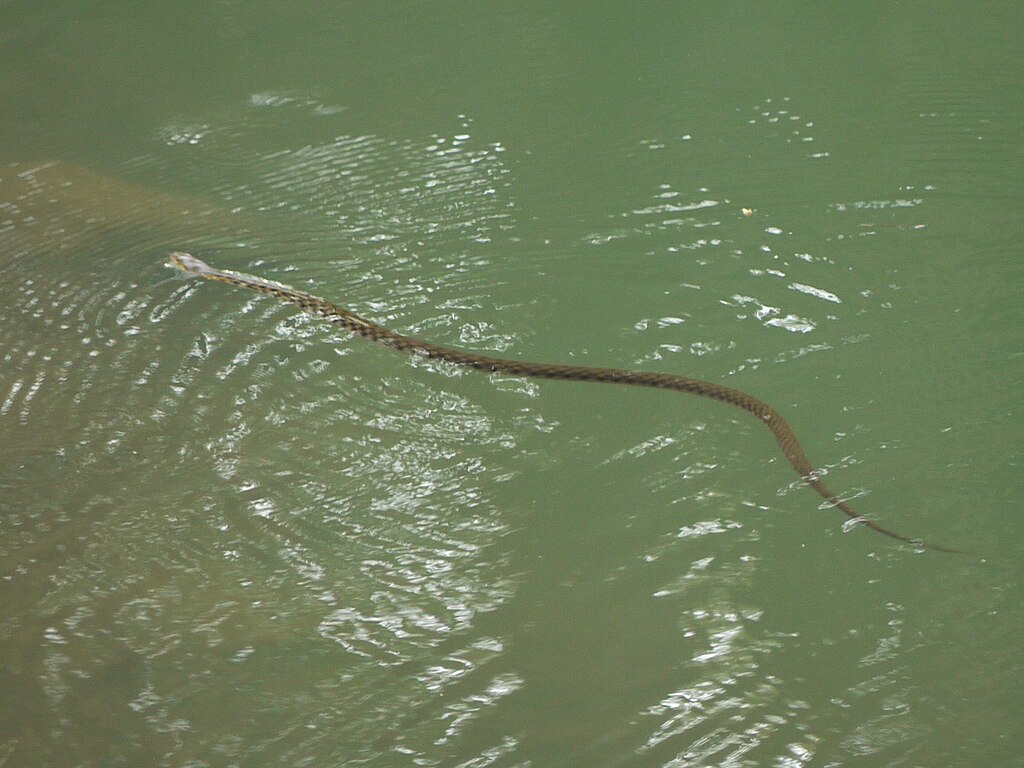
Northern water snakes are non-venomous yet often misidentified as water moccasins due to their similarly robust bodies and aquatic habits. These snakes inhabit various freshwater environments throughout eastern and central North America, including lakes, rivers, and wetlands, where they’re frequently spotted basking on rocks or branches overhanging water. When swimming, northern water snakes display remarkable agility, able to dive quickly and remain submerged for several minutes while foraging for prey such as fish, amphibians, and crayfish. Their bodies bear distinctive banded patterns that darken with age, sometimes appearing almost uniformly black in older specimens. Though non-venomous, northern water snakes compensate with an aggressive defensive strategy when cornered—they’ll flatten their bodies, strike repeatedly, and release a foul-smelling musk while defecating on handlers, making them less than ideal candidates for handling despite their harmless status.
Olive Sea Snake (Aipysurus laevis): The Coral Reef Hunter

The olive sea snake thrives in the vibrant coral reef ecosystems of the western Pacific Ocean, particularly in waters surrounding Australia and New Guinea. These highly venomous elapids have evolved specialized adaptations for marine life, including valved nostrils that close underwater and a flattened, paddle-shaped tail that provides powerful propulsion through coral labyrinths. Olive sea snakes possess remarkable diving capabilities, able to descend to depths of over 50 meters and remain submerged for up to two hours while hunting for small fish, eels, and crustaceans that hide within reef crevices. Unlike some other sea snakes, olive sea snakes demonstrate curious behavior toward divers and may approach humans out of apparent interest rather than aggression. Scientists have observed that these snakes are most active during twilight hours, when they navigate through complex reef structures using not only their vision but also their sensitive skin, which can detect subtle water pressure changes created by moving prey.
Diamondback Water Snake (Nerodia rhombifer): The Patient Predator
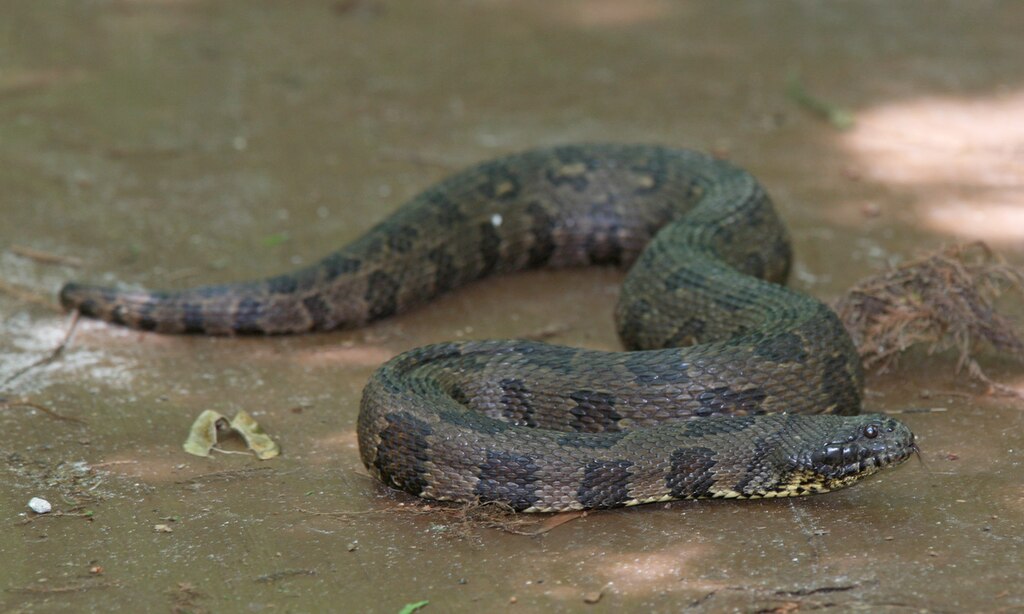
The diamondback water snake is a large, non-venomous colubrid found throughout the central United States, particularly in the Mississippi River drainage basin and surrounding waterways. These impressive aquatic hunters can reach lengths exceeding five feet and are distinguished by their robust bodies and distinctive pattern of dark rhomboidal blotches outlined with lighter scales. Diamondback water snakes employ a unique hunting strategy, often hanging from branches overhanging water bodies with just their heads suspended above the surface, ready to strike at passing fish or frogs. Their swimming technique involves powerful lateral undulations, allowing them to move swiftly through water while maintaining excellent maneuverability to navigate dense vegetation in their preferred habitats of swamps, marshes, and slow-moving rivers. Though completely harmless to humans, diamondback water snakes are notorious for their defensive temperament when handled, often striking repeatedly, releasing malodorous musk, and sometimes even expelling blood from their mouth—a specialized defense mechanism called “autohaemorrhaging.”
Beaked Sea Snake (Hydrophis schistosus): The Lethal Fisherman
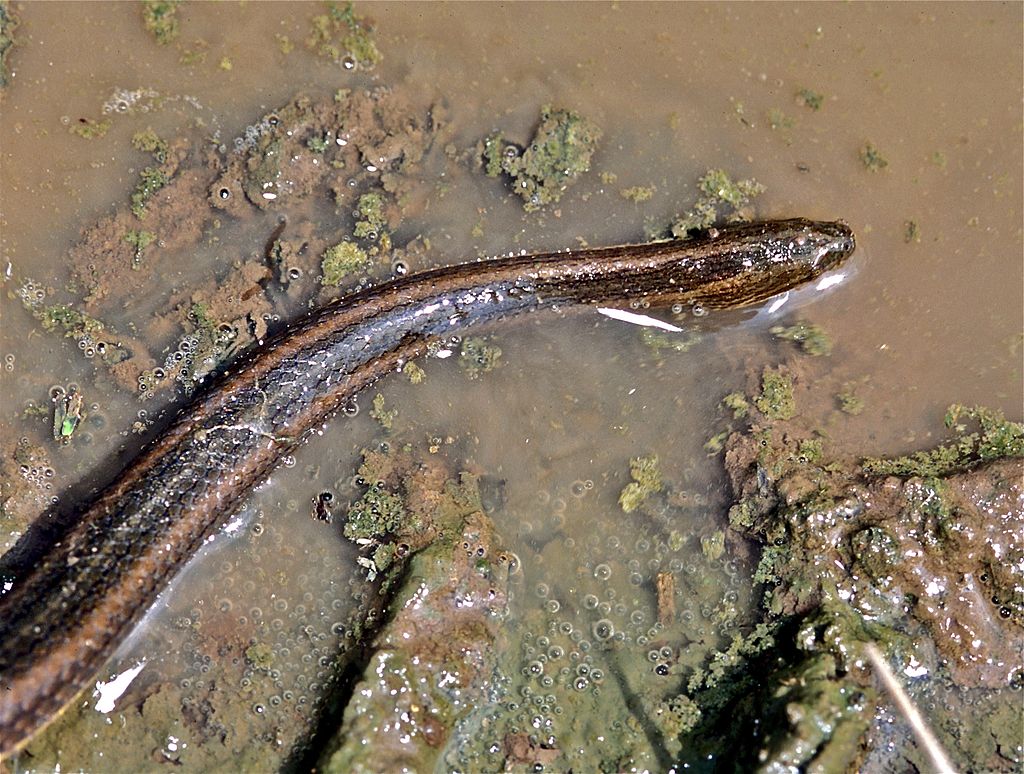
The beaked sea snake, sometimes called the hook-nosed sea snake, is considered one of the most venomous serpents in the world, with venom approximately eight times more potent than that of a cobra. These highly specialized marine predators inhabit coastal waters throughout the Indo-Pacific region, from the Persian Gulf to northern Australia, often venturing into estuaries and even freshwater rivers that connect to the ocean. Beaked sea snakes are masterful swimmers thanks to their laterally compressed bodies and paddle-shaped tails, which they use to execute rapid direction changes when pursuing fish in murky estuarine waters. Their distinctive hooked snout, which gives them their common name, serves an important function in probing mud and crevices for hiding prey. Despite their lethal reputation, these snakes are actually responsible for numerous human fatalities primarily because they’re frequently caught in fishing nets, where they may bite fishermen attempting to untangle them rather than from unprovoked attacks while swimming.
Tentacled Snake (Erpeton tentaculatum): The Ambush Specialist
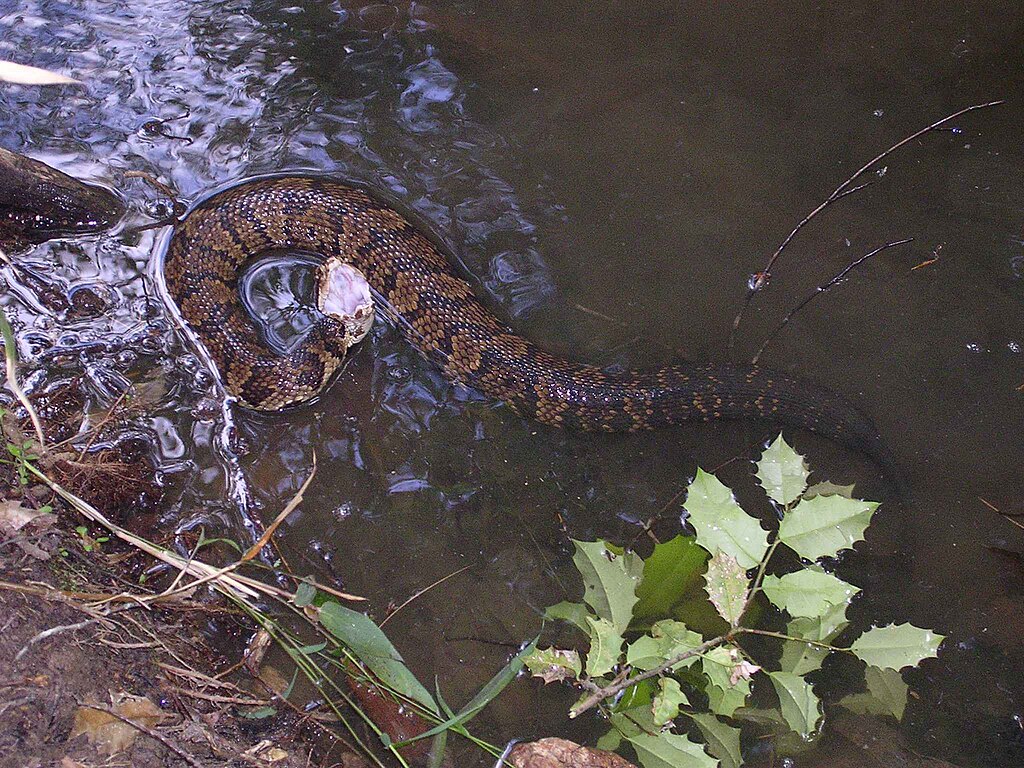
The tentacled snake represents one of the most bizarre and specialized aquatic predators in the serpent world, instantly recognizable by the two fleshy tentacle-like protrusions extending from its snout. Endemic to freshwater environments in Southeast Asia, particularly Thailand, Cambodia, and Vietnam, these fully aquatic snakes rarely leave the water throughout their entire lives. The tentacled snake has evolved an extraordinary hunting strategy: it holds its body in a rigid J-shaped position, remaining motionless for hours until a fish approaches, then triggers a precisely calculated strike that accounts for the fish’s predictable escape response. Their unique tentacles are densely packed with sensory receptors that can detect minute water movements created by nearby prey, essentially functioning as underwater motion detectors. Remarkably, tentacled snakes have been documented executing their strikes in as little as 15 milliseconds—among the fastest predatory movements in the animal kingdom—and can even anticipate the direction a fish will flee, striking at where the prey will be rather than where it is.
Adaptations for Aquatic Life in Swimming Snakes
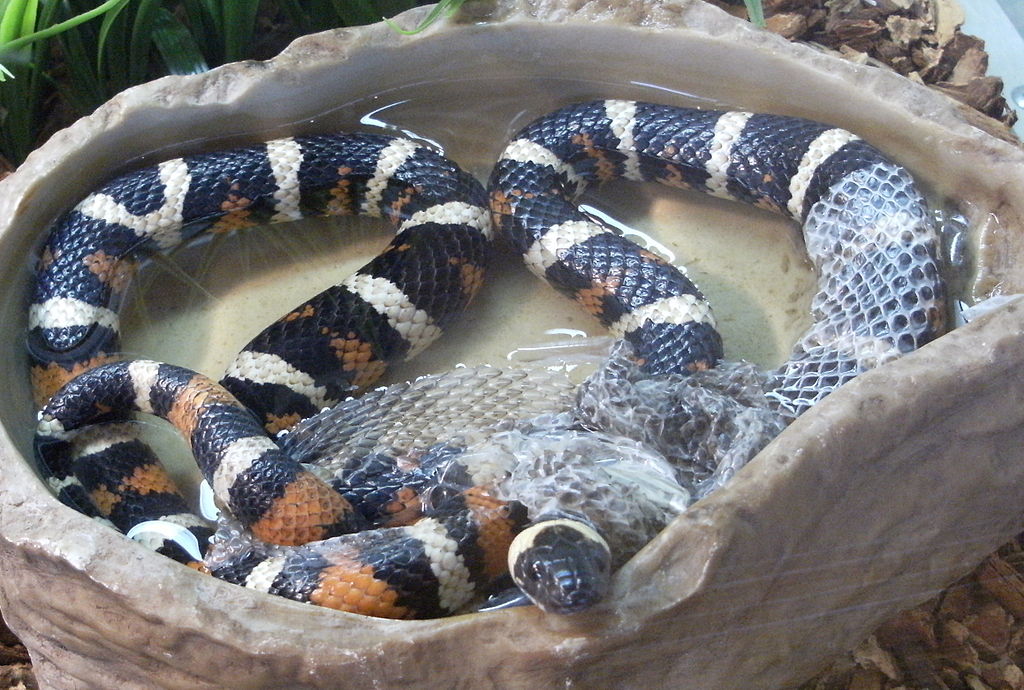
Swimming snakes exhibit remarkable physiological and anatomical adaptations that enhance their aquatic capabilities. Many species possess specialized scales that create more efficient hydrodynamics, reducing drag as they move through water. Sea snakes have evolved laterally compressed bodies and paddle-shaped tails that function like oars, providing powerful propulsion with each undulating movement. The respiratory systems of swimming snakes show significant modifications as well, with sea snakes possessing a single elongated lung that extends nearly the length of their body, allowing for extended submersion times and efficient oxygen extraction. Some species have developed specialized valved nostrils that close underwater and salt glands near their tails that enable them to drink seawater and excrete excess salt, solving the critical challenge of maintaining proper hydration in marine environments. These evolutionary refinements collectively demonstrate how these reptiles have successfully conquered aquatic environments despite their terrestrial reptilian ancestry.
Hunting Strategies of Aquatic Serpents
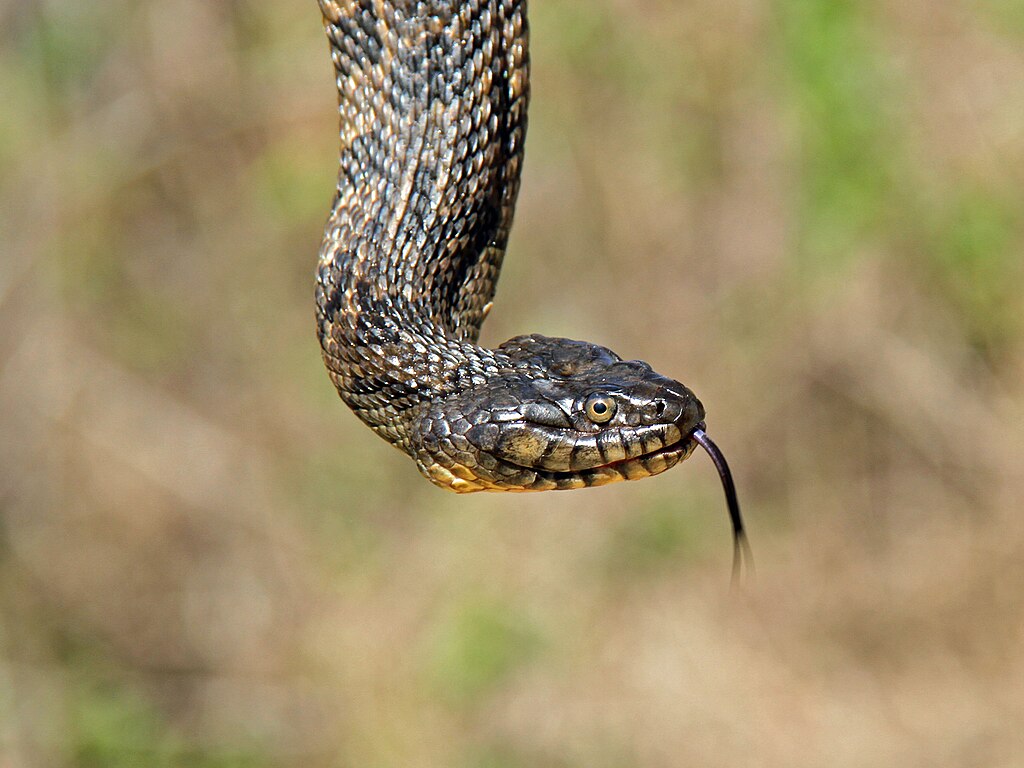
Swimming snakes employ diverse and sophisticated hunting techniques tailored to their aquatic environments. Many species, such as water moccasins, actively forage by exploring underwater vegetation and crevices, using their acute sense of smell to locate prey even in murky conditions. Others, like the tentacled snake, are ambush specialists that remain motionless for extended periods, using their camouflaged appearance to blend with underwater vegetation until prey ventures within striking distance. Sea snakes often hunt cooperatively with certain fish species in a remarkable example of interspecies hunting alliances, where the fish flush prey from coral crevices while the snakes block escape routes. Some freshwater specialists employ a fascinating technique called “luring,” where they create small vibrations with their tail tips that mimic the movements of worms or insect larvae, attracting curious fish within striking range. These varied hunting approaches highlight how swimming snakes have evolved specialized behaviors to exploit different ecological niches in aquatic ecosystems.
The Dangers of Venomous Aquatic Snakes
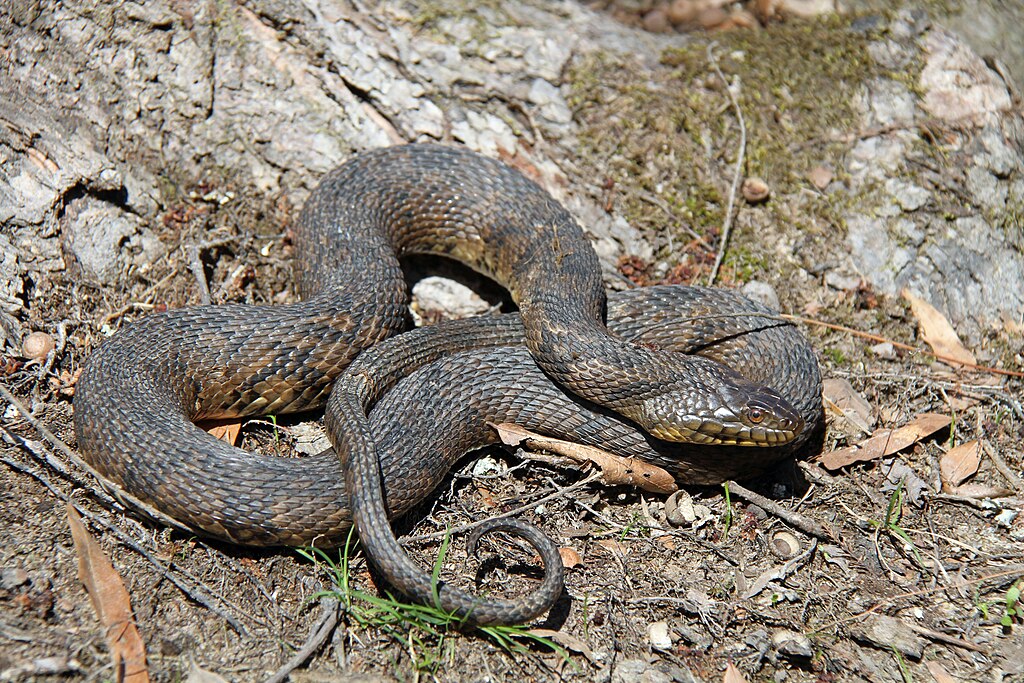
Many expert swimming snakes possess potent venom that presents significant hazards to humans who share their aquatic environments. Sea snakes in particular carry some of the most toxic venoms of any snake species, with neurotoxins capable of causing respiratory paralysis, muscle damage, and death if left untreated. Water moccasins deliver a hemotoxic venom that destroys tissue and prevents blood clotting, causing painful and potentially dangerous symptoms even when bites aren’t fatal. Complicating matters further, obtaining medical treatment for aquatic snake bites can be challenging, especially for fishermen or divers in remote locations far from medical facilities with appropriate antivenoms. Despite their dangerous potential, most aquatic snake species avoid human contact when possible and bite only when directly threatened or accidentally encountered—such as when stepped on in shallow water or caught in fishing nets. Understanding the behavior and habitats of these swimming specialists is crucial for preventing dangerous encounters in areas where venomous aquatic snakes are common.
Conservation Status and Threats
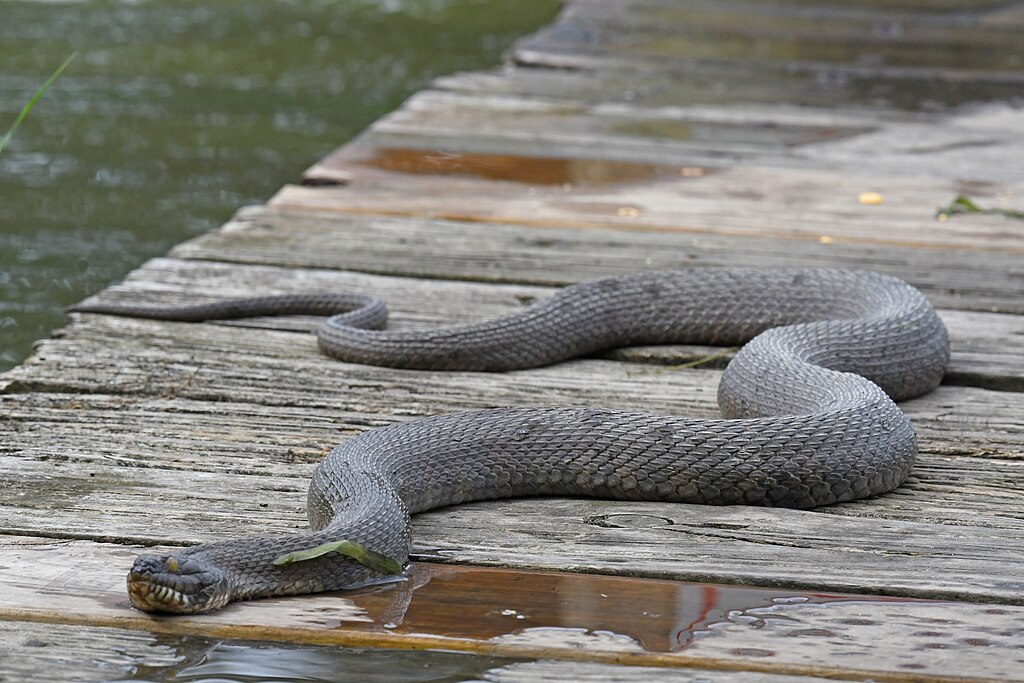
Many expert swimming snake species face significant conservation challenges despite their remarkable adaptations. Sea snakes are particularly vulnerable to habitat degradation, with coral reef decline directly impacting species like the olive sea snake that depend on these complex ecosystems for hunting and shelter. Commercial fishing operations unintentionally capture thousands of sea snakes annually as bycatch, with many dying from stress, injury, or drowning before they can be released. Freshwater swimming specialists face threats from wetland drainage, water pollution, and river impoundment projects that fundamentally alter their habitats. Climate change poses additional concerns, as rising ocean temperatures and acidification damage marine ecosystems, while changing precipitation patterns affect freshwater habitats. Some species, like certain sea snakes in Australia and Southeast Asia, have experienced population declines exceeding 90% in recent decades, highlighting the urgent need for conservation efforts focused on these often-overlooked reptiles.
Behavioral Differences Between Land and Water Movement
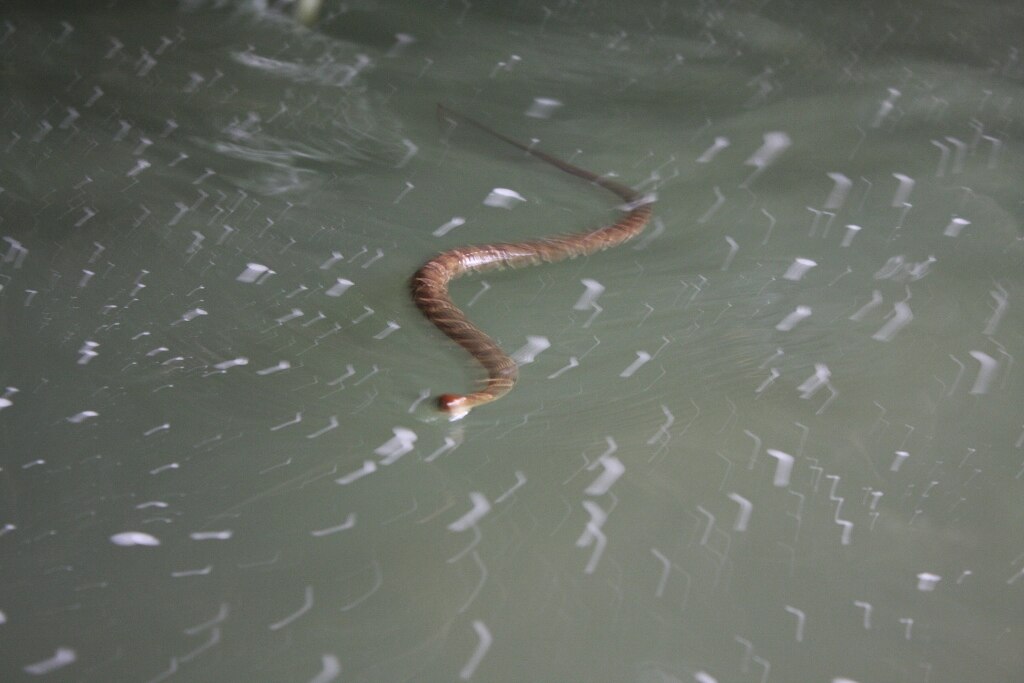
The swimming mechanics of aquatic snakes differ fundamentally from their terrestrial locomotion, demonstrating remarkable evolutionary adaptations to aquatic environments. On land, most snakes employ lateral undulation, rectilinear, or concertina movements that rely on friction against ground surfaces to generate forward propulsion. In water, however, expert swimming snakes utilize specialized lateral undulations with greater amplitude and modified timing, creating thrust by pushing against the water itself rather than a solid substrate. Aquatic specialists can modulate their swimming speed and style based on whether they’re actively hunting or simply traveling, with some species capable of explosive bursts of speed when attacking prey. Most fascinating is how semi-aquatic species can seamlessly transition between terrestrial and aquatic movement patterns, effectively “switching gears” as they move between environments. This behavioral flexibility represents a significant evolutionary advantage, allowing these reptiles to exploit resources and escape threats across multiple habitat types.
Fascinating Facts About Swimming Snakes

Swimming snakes exhibit numerous remarkable characteristics that demonstrate their extraordinary adaptation to aquatic life. Some sea snake species can remain submerged for up to eight hours by absorbing up to 33% of their oxygen requirements directly through their skin while underwater, supplementing their respiratory system in a way no terrestrial snake can. The yellow-bellied sea snake can travel vast oceanic distances by essentially “sailing” on surface currents, allowing individuals to drift passively across entire ocean basins in a form of natural rafting. Certain freshwater swimming specialists possess the ability to detect electrical fields generated by the muscle movements of nearby fish, using this sixth sense to locate prey in complete darkness or murky water. Perhaps most surprising, some aquatic snakes demonstrate tool use—a behavior rarely documented in reptiles—by creating “fishing traps” where they form their bodies into underwater tunnels that fish swim through, only to be ambushed from within the living serpentine tube. These remarkable adaptations highlight how thoroughly these reptiles have conquered aquatic environments despite their terrestrial evolutionary origins.
Conclusion: Masters of Water and Land
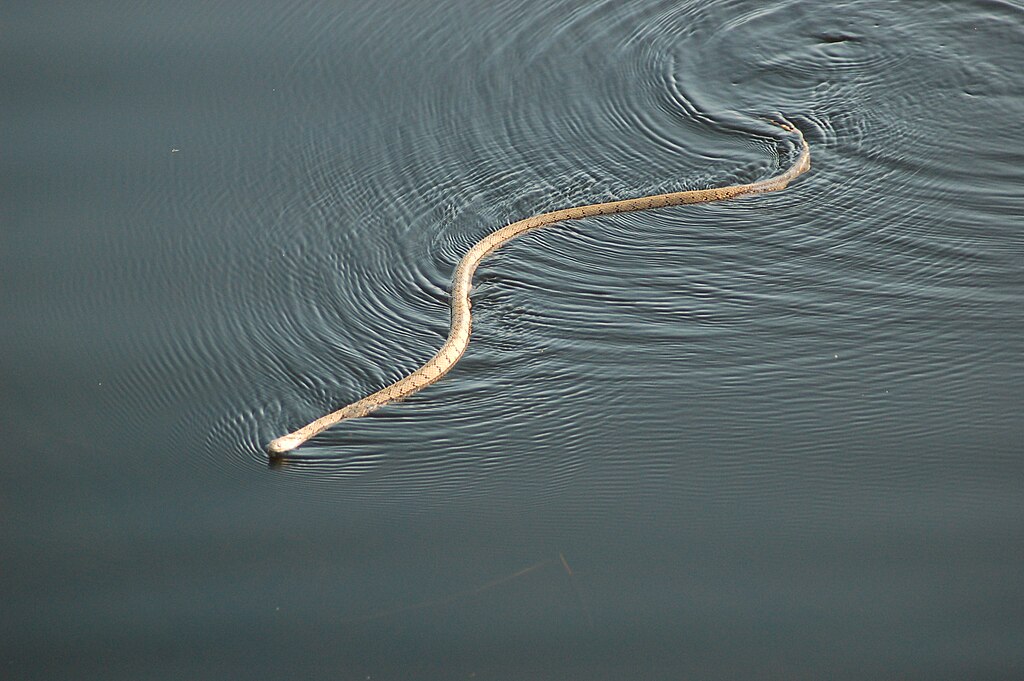
The seven snake species explored in this article represent some of nature’s most successful aquatic specialists, demonstrating how evolutionary processes have transformed terrestrial reptiles into masters of underwater environments. From the fully marine sea snakes that never set scale on land to the versatile semi-aquatic species that move effortlessly between worlds, swimming snakes showcase remarkable adaptations in anatomy, physiology, and behavior. Their specialized hunting techniques, defense mechanisms, and locomotion strategies reveal the incredible diversity that has evolved within this group of reptiles. As we face growing environmental challenges that threaten aquatic ecosystems worldwide, understanding and appreciating these serpentine swimmers becomes increasingly important for conservation efforts. Whether inspiring fascination or fear, these expert swimming snakes remind us of the extraordinary ways life adapts to conquer every available habitat on our planet—even those beneath the waves.





